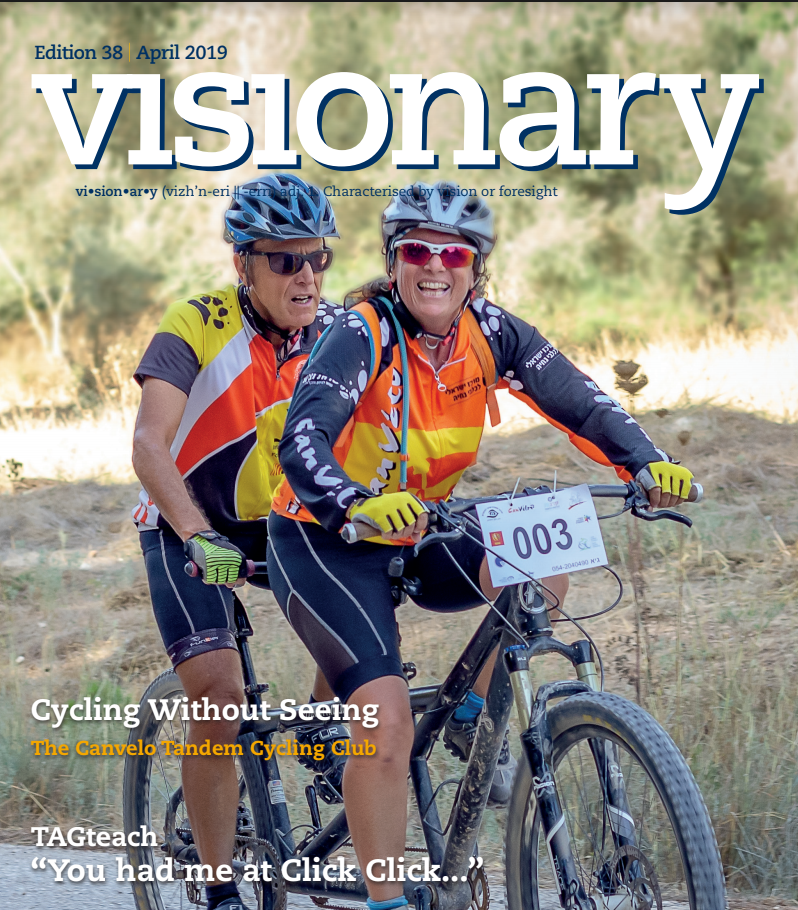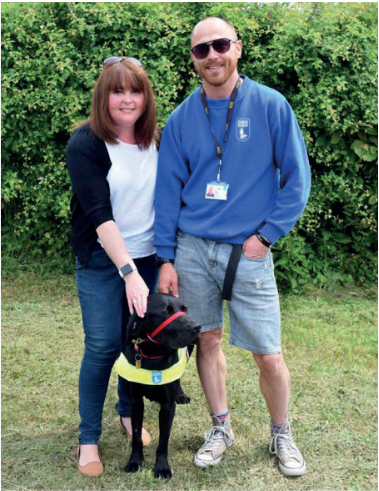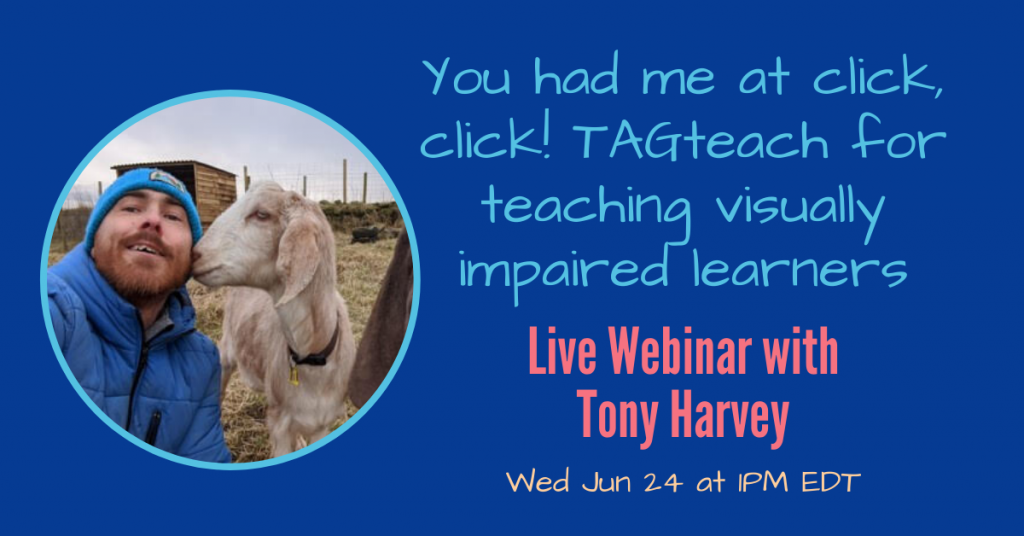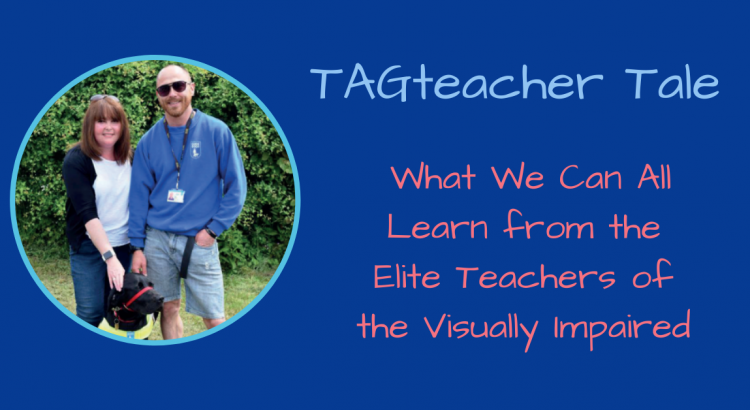By Tony Harvey, Guide Dogs for the Blind UK
Reprinted from Visionary Magazine, April 29 Edition

I have worked with visually impaired people for the past 15 years, and guides dogs for the last 10. We have to the train people how to work with their dogs in order for then to have the best mobility possible. There is a lot to learn so I have been using TAGteach to really break down these processes and turn them into easy to learn chunks.
TAGteach was great for me as I didn’t have to process a lot of words. I just knew if I hadn’t heard the click, I had something else to do. Thank you for understanding me.
Vision Impaired Client
TAGteach stands for Teaching with Acoustical Guidance and it’s teaching and communication method that combines positive reinforcement with an acoustical event marker. It’s an application of behavior science that makes the science of positive reinforcement accessible.
TAGteach relies on breaking behaviour down into small pieces, looking for desired behaviors and giving positive reinforcement to increase those moments of great behaviour. In that regard it is the same as guide dog training, or all animal training.
For me it’s like telling a story or painting a picture. Teach a single tag point, and then add on one more part and then another until you have the whole picture.
One client I recently worked with has memory issues and finds it difficult to process information. When she qualified with her dog, she said to me “TAGteach was great for me as I didn’t have to process a lot of words. I just knew if I hadn’t heard the click, I had something else to do. Thank you for understanding me.”
I was hesitant to use it at first. it seemed complicated and to be honest I was not sure of the benefit. Anyway, as a huge advocate of anything positive-reinforcement based I decided to put myself through the course, so I could really learn about it and apply it correctly. It’s far more than just “clicking a person”.

It’s primary use has been with sighted people, and children in particular. It has also had success with kids with additional disabilities such as autism. In order for me to use it successfully with the guide dog client base I had to make some adaptations. My first adaptation was to mostly drop the demonstration stage. Obviously this is not so relevant, but there are still times when I manage to do a form of demonstration by utilising a sighted guide or something similar. My second adaptation was on what to use as a marker in the presence of clicker savvy guide dogs! TAGteach puts a lot of emphasis on the potential emotional baggage a vocal marker can bring so I opted for a shoulder tap. Since then I have found an alternative acoustical marker that is different to the clicker.
There are no mistakes for the person to make, only opportunities for success.
Tony Harvey
The advantages I have found using TAGteach have been really positive and not just based on the clicker but on how I now really break down tasks into small chunks. There are no mistakes for the person to make, only opportunities for success. If people are not getting the tag points, all we have to do as practitioners is adapt our tag point, no telling them it’s wrong, just a new opportunity for successful results. We all know behaviour is driven by successful outcomes. I do a lot of work prior to the dog being involved, this means I can really hone the skills first. Then the client is more fluid and confident when the dog arrives and he dog experiences a more similar style of handling to what it is used to and so hopefully less stress. It creates fluid sessions as there is no conversation required during the learning. Once they hear a tag the know it’s right and can continue. No tag means keep trying. I have found quick learning with great retention using this method, as well as as added bonus of increased focus on the tasks which I think is due to lack of conversation and task orientation once you say, “The tag point is….”
So why isn’t everyone doing it? It’s fairly new, some people see the clicker and think it would patronise people using a “dog” training device on humans (although I have never found this when I have used it). People like what they know and it’s a leap of faith for us to try something new, also people are good trainers and coaches so they already do a great job. Anyone with reservations, I would advise them to go to tagteach.com and youtube.com/tagteacher where there is a collection of information and videos on its application.
Learn Tony’s Best Training Tips
Join us for a live webinar with Tony to learn all his best secrets for top level training. After the live date it will available as a recording at the same link.

